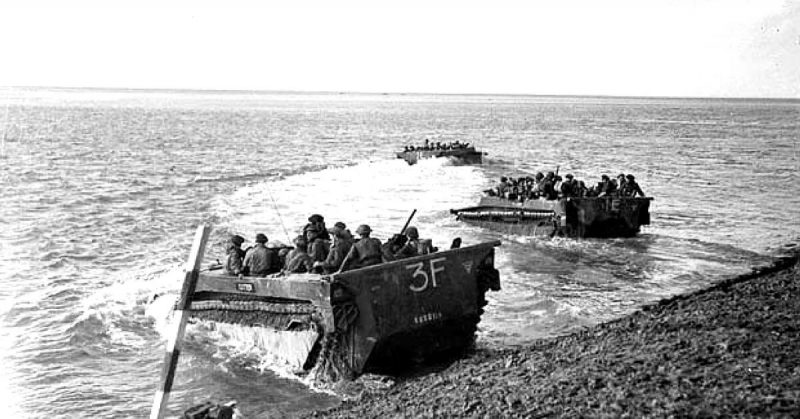Kenneth Donald Duncanson, a private in the Canadian Army, was reported missing in action on September 17, 1944. He was fighting in Belgium to gain control of the Leopold Canal.
Seventy years later, his remains were found in a farmer’s field along with his compass, two combs, a shaving kit, a wallet and his gold signet ring with his initials.
He’s the latest soldier to be recovered by the Canadian Forces through a program that’s matched dozens of families with relatives long considered lost forever.
The program has made a small dent in the 27,000 missing Canadian soldiers, most killed during the two world wars.
18 months after being found, Duncanson’s remains will be interred in a military cemetery with members of his family and his regiment in attendance.
Judith Thomas is Duncanson’s cousin once removed. An amateur genealogist, she calls the news, “the most wonderful gift.” She will be attending the service in Belgium.
Duncanson’s remains were located by two Belgian hobbyists whose metal detectors found the machine gun magazines in the area. They uncovered his bones as they were digging for the metal.
The police quickly determined that this was not a criminal matter. Belgium and northern France are full of old battlefields with unmarked graves a commonplace discovery.
Because of the potential for the unexploded ordinance to be located in the same area as the deceased soldier, the police contacted the Commonwealth War Graves Commission.
While the US routinely searches out the remains of their war dead, the task is too monumental for Commonwealth countries. “You’d literally have to tear up the French and Belgian countryside,” said Major Ivan Dellaire, a heritage officer with the Canadian Forces.
The Department of National Defense (DND) has estimated that Canada has about 27,000 missing military casualties: 19,000 in WWI; 8,000 in WWII; just over a dozen in the Korean War. The Casualty Identification Program started in 2006 and has since identified 22 Canadian and 17 British service members.
The DND sent a forensic archaeologist to investigate the remains found in Belgium. His report noted that there were still parts of the skeleton that had not been found. He recommended excavating the site.
After waiting for the farmer’s winter crop to be harvested, the DND sent a team to investigate. The team included an archaeologist and a historian.
The team knew that 800 Canadians had died during Belgium’s liberation during World War II. The Algonquin Regiment took the brunt of the casualties in the area as they fought to get a bridgehead across the Leopold Canal. Out of the 29 dead from that regiment, 8 were still missing.
“We knew it had to be one of those eight guys,” said Major Dellaire.
Immediately, Duncanson became a possible prime match. The damage to his skull was consistent with reports that he had been shot by a sniper. He had the ring with his initials. Finally, dental records confirmed the match.
Thomas, though elated to hear from the DND that her cousin had been found, was nonetheless sad that the previous generation of her family had passed on without learning of Duncanson’s fate.
“I knew all these people who would have mourned for him,” she said. “It’s been emotional.”
Through Thomas’s genealogical work, we know that Duncanson lived in Dutton, Ontario – a small town near London. He drove a truck for the local creamery. He had a wife named Lillian.
The two never had children. A collage of photos shows Duncanson in uniform with a poem of unknown authorship, titled The Same Old Moon: “We loved ‘neath this moon / Then the war came along / And ended the happiness / That we had for so long.”
Lillian seems never to have forgotten him. Just as a set of initials on a ring helped identify his remains, a set of initials kept his memory alive back home. A grocery store that Lillian owned with her second husband was called K & L – for Kenneth and Lillian.
